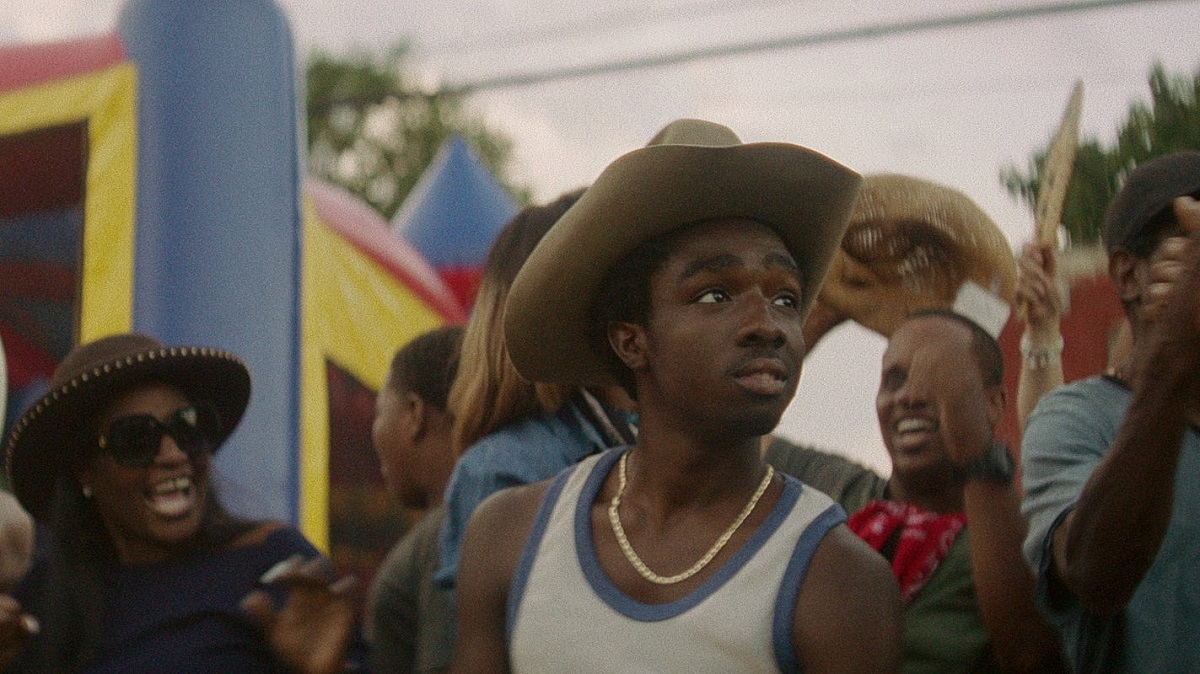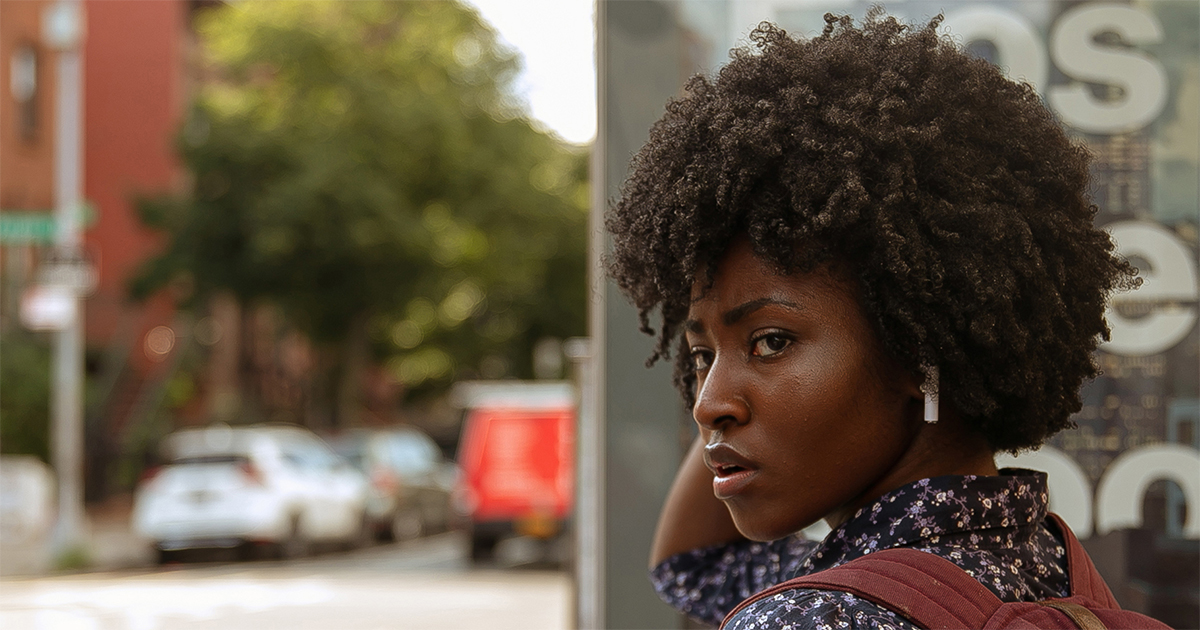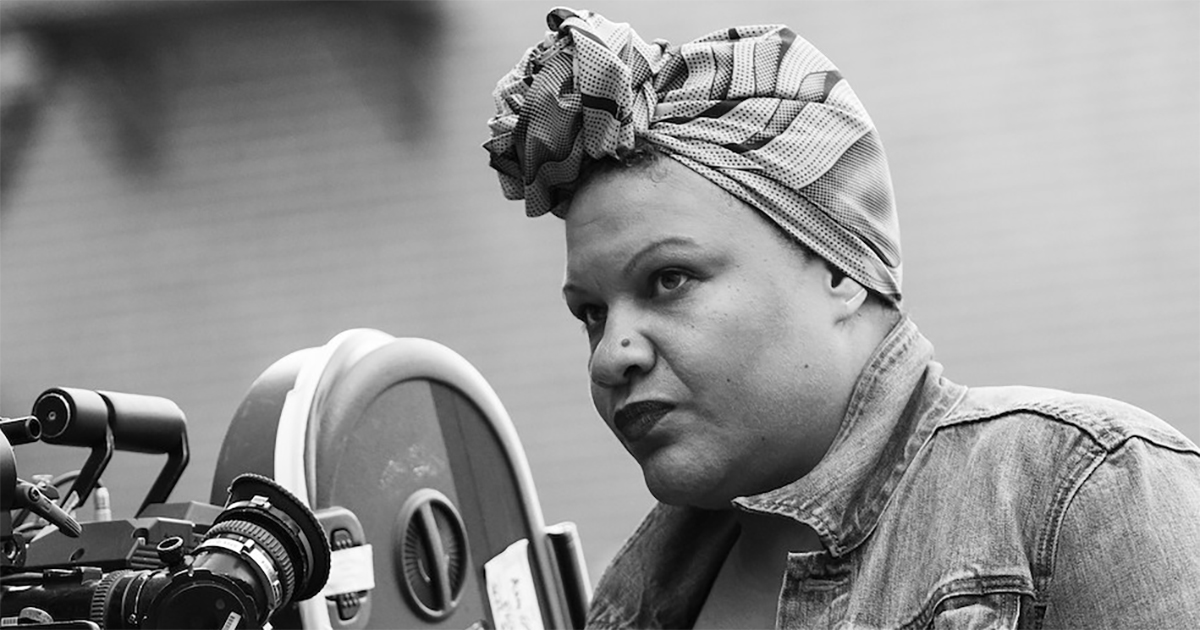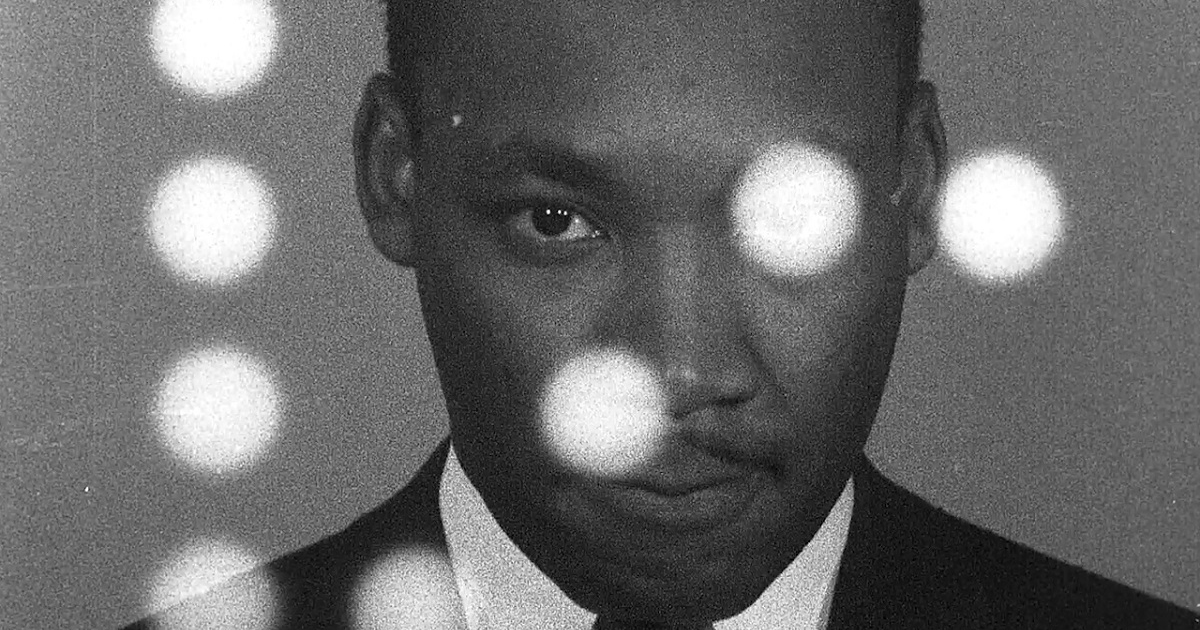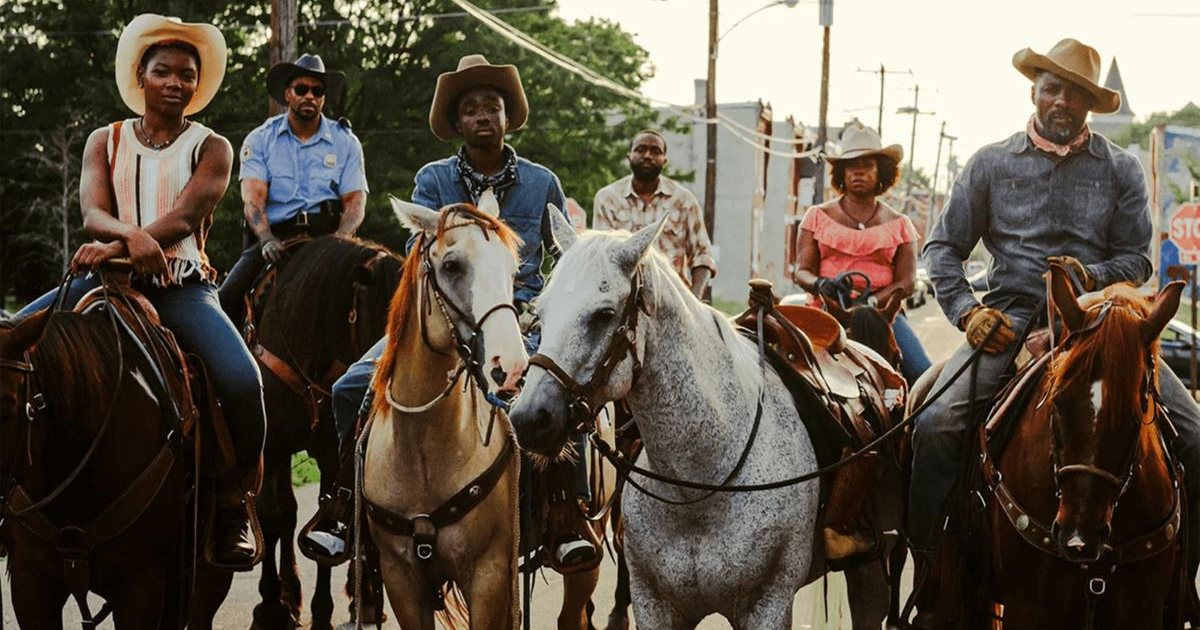
Sent to live with his estranged father for the summer, a rebellious teen finds kinship in a tight-knit Philadelphia community of Black cowboys in Concrete Cowboy, the debut feature from director Ricky Staub, who co-wrote the script with Dan Walser. The film, which is now streaming on Netflix, was inspired by the novel “Ghetto Cowboy” by G. Neri, but the project came to life when Stub met the real-life urban cowboys of Philadelphia.
Concrete Cowboy follows 15-year-old Cole (Caleb McLaughlin), who, following expulsion from school in Detroit, is sent to North Philadelphia to live with his estranged father, Harp (Idris Elba). Harp finds solace in rehabilitating horses for inner city cowboys at the Fletcher Street Stables, a real-life black urban horsemanship community that has provided a safe haven for the neighborhood residents for more than 100 years. Torn between his growing respect for his father’s community and his reemerging friendship with troubled cousin Smush (Jharrel Jerome), Cole begins to reprioritize his life as the stables themselves are threatened by encroaching gentrification.
Part documentary and part coming-of-age-story, Concrete Cowboy is 100% authentic. The film production used local talent whenever possible, and filmed on location in downtown Philadelphia. “The new Netflix film Concrete Cowboy is at its best when it is focused less on its plot than on its visually stunning documentation of the culture of Black cowboys in Philadelphia,” Esther Zuckerman writes her review for Thrillist:
“The film, which stars Idris Elba and Stranger Things’ Caleb McLaughlin, tells the story of a teenager, Cole (McLaughlin), who is sent by his exhausted mother to live with his father, Harp (Elba), a leader of the Fletcher Street Stables community in Philly. While Cole initially turns up his nose at the horses — one of whom is living in the room where he is supposed to sleep — he eventually starts to grow into maturity when he accepts the pastime and learns from it.”
READ MORE: How Netflix’s ‘Concrete Cowboy’ Brought the Story of Philly Horseback Riders to Life (Thrillist)
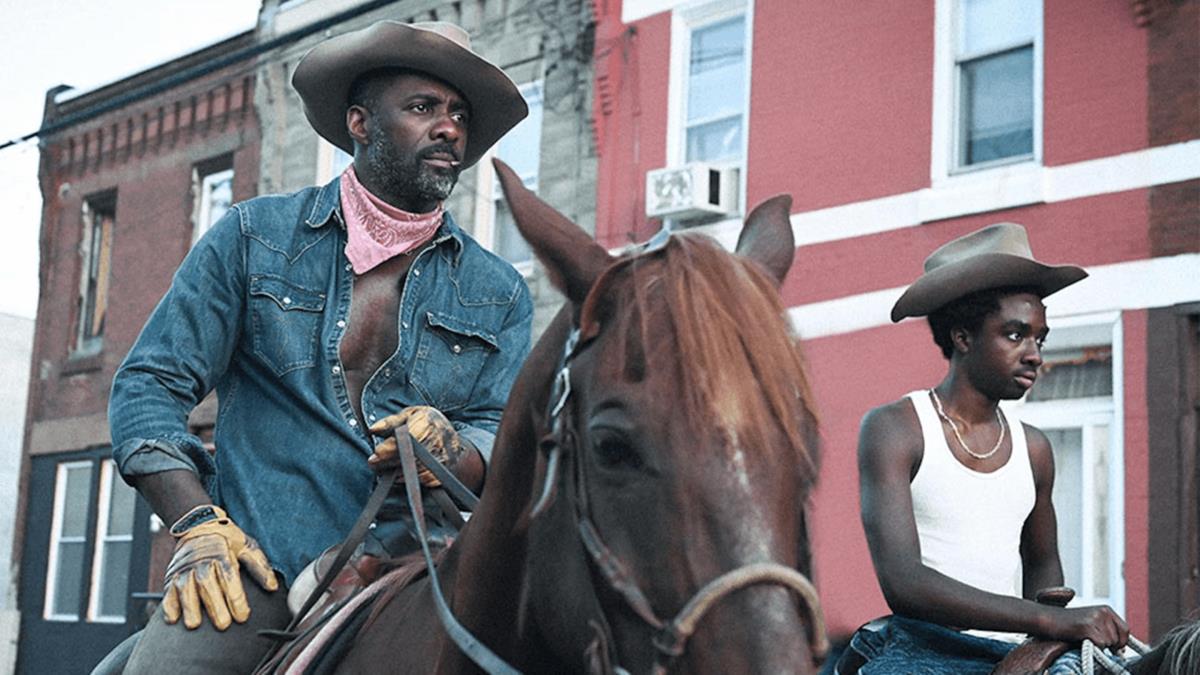
Kristin Corry, in her review for Vice, examines the film in the context of common tropes in criticism about Black filmmaking. “People will likely be talking about Concrete Cowboy as a film about fatherhood, masculinity, and other buzzwords that come along with cultural criticism about Black art. A new Black renaissance in film has made stories that were traditionally excluded from the mainstream more visible, but the commentary continues to feel singular,” she writes.
NOT WHODUNNIT, BUT HOW-DUNNIT — DIGGING INTO DOCUMENTARIES:
Documentary filmmakers are unleashing cutting-edge technologies such as artificial intelligence and virtual reality to bring their projects to life. Gain insights into the making of these groundbreaking projects with these articles extracted from the NAB Amplify archives:
- Crossing the Line: How the “Roadrunner” Documentary Created an Ethics Firestorm
- I’ll Be Your Mirror: Reflection and Refraction in “The Velvet Underground”
- “Navalny:” When Your Documentary Ends Up As a Spy Thriller
- Restored and Reborn: “Summer of Soul (…Or, When the Revolution Could Not Be Televised)”
- It WAS a Long and Winding Road: Producing Peter Jackson’s Epic Documentary “The Beatles: Get Back”
Yet, “overarching themes like exploring a young boy’s frayed relationship with his father” serve only as a single entry point into Black life, Corry notes. “[Director Ricky Staub] seems to understand that, touching upon the usual tropes while at least attempting to push past them. One of the ways he does that is through using the cowboy conceit to view issues of gentrification in Philly from the perspective of a discussion about territory, and what happens when owners come to collect what they feel is rightfully theirs.”
READ MORE: With ‘Concrete Cowboy’, Black Cowboys Get Their Due (Vice)

While Idris Elba brings his A-list talent to the table, the true stars of Concrete Cowboy are the Fletcher Street riders, and from the beginning Staub wanted his film to be centered on them. “These are real-life Fletcher Street riders, whom Straub has worked into the plot and coaxed such genuine performances out of, they probably deserved top billing,” Eric Kohn writes in his review for IndieWire:
“Chief among them is wheelchair-bound Jamil Prattis, who helps Cole get a handle on the shit-shoveling stable routine before he warms up to his surroundings, and Ivanna Mercedes, the plucky young rider who becomes Cole’s romantic interest. Once again, their relationship isn’t exactly deep, but there’s an underlying authenticity to their performances — aided by cinematographer Minka Farthing-Kohl’s magic-hour cinematography — that endows Concrete Cowboy with genuine docudrama intrigue as it maps out a hidden world. That gives the movie a real sense of peril when its future is endangered by encroaching gentrification.”
READ MORE: ‘Concrete Cowboy’ Review: Idris Elba Stars in a Formulaic but Fun Father-Son Drama (IndieWire)
Despite the challenges of shooting on location in downtown Philadelphia, the filmmakers were determined to include as many real-life elements as possible. The cramped urban setting of the Fletcher Street Stables “creates incredible visuals in the movie,” Kelle Long notes in The Credits.

“For me, anytime someone says no one has shot there or you can’t shoot there, I immediately want to shoot there,” Staub said to Long. “It’s wonderful to be able to make something that no one’s ever seen. Especially the actual stables and community there, and just to be the first. Hopefully, there are other stories that come out of this community and Black cowboy movies.”
READ MORE: “Concrete Cowboy” Director Ricky Staub Saddles Up in Feature Debut (The Credits)

As any filmmaker can attest, any production involving horses becomes exponentially complex, but filming horses in a modern-day city presents even more logistical challenges. Speaking to Luke Parker in an interview for Film Inquiry, Staub details these challenges, as well as how employing a documentary approach helped overcome them:
“Well out the gates, there’s safety. We’re also shooting in the middle of summer, so there’s that. They’re animals. Thankfully, we had really wonderful horse trainers. LTD is the company that brought in our picture horses. But then, we were also using the real horses down at Fletcher Street as background. You know, they’re animals — humans don’t even obey when they’re asked to do something, let alone an animal.
“But as long as we were flexible and understanding, a lot of our approach was to capture the world in a documentary-style anyway. It went to those variables in a lot of ways, like, ‘okay, this is how they’re acting. We need to pivot and just capture what’s possible in that moment.’ There had to be a lot of flexibility.”

While Staub had long been drawn to the image of a cowboy riding down the streets of North Philadelphia, it was his work in the community that led him to make Concrete Cowboy, he tells Parker:
“Visually, it’s very resting to see a cowboy riding down the streets of North Philly. It’s not a common image. But obviously, this majestic creature in the middle of the neighborhood, from a visual standpoint, is very resting, which then drew me to the book.
“But what really sealed the deal for me — in 2011, I started a production company in Philadelphia called Neighborhood, with a mission to hire adults returning home from incarceration. And the first cowboy I met, his name was Eric Miller. I was speaking in court, as I do every year. He had been out of prison for a week and already purchased a horse, which I found very fascinating. So we struck up a conversation and I was able to learn more about Fletcher Street and the community there, the problems they were facing with gentrification making its way up north and their fear of losing their land and stables.”
READ MORE: Interview With Ricky Staub, Writer-Director of CONCRETE COWBOY (Film Inquiry)

Staub detailed his deep relationships with the Fletcher Street Riders, and within the South Philadelphia community as a whole, in a personal essay on Talkhouse:
“We spent years putting this film together before I stepped onto set. My closest collaborators from the community were two cowboys, Eric ‘E’ Miller and Jamil ‘Mil’ Prattis. Mil you’d know as Paris from the film. E was my main man behind the scenes. I met E in 2017 while speaking in court — I launched a production company in 2011 called Neighborhood Film Company, with a mission to hire adults returning home from incarceration, so I speak every year in court to new candidates. E stood before the judge, after only being home a week, and said he’d just purchased a horse. This fascinated me. We struck up a conversation, which led to a friendship, which ultimately led to us deciding to put together a film in hopes of using it as a wake-up call for the city to help save the legacy of Black Cowboys in Philadelphia, as the stables down at Fletcher Street were facing extinction at the hands of gentrification.”
In a tragic turn of events, Eric “E” Miller was murdered during a robbery of his home one week before pre-production. In the wake of E’s death Staub was unsure how the filmmakers would be able to mobilize the community to support Concrete Cowboy, but he was determined to press on. He attended E’s funeral just days before the entire production office was scheduled to open, and was enormously touched by the number of people who came up to him to speak about the project:
“Community member after community member came up to me telling me how much they had been looking forward to meeting me, how much E had told them about the story, and even further how E imagined them playing a role in the film. Cowboys and cowgirls with stories, props we could use, photos for inspiration — you name it, they had it ready for me. Unbeknownst to me all these years, E had been taking his role as producer very seriously, planting seeds for how we’d tell this story with the full community involved. I remember him always telling me, ‘No matter what, we have to include everyone. We need everyone’s voice. This is about all of us.’”
READ MORE: Terrifying. Unexpected. Beautiful: The Making of Concrete Cowboy (Talkhouse)
